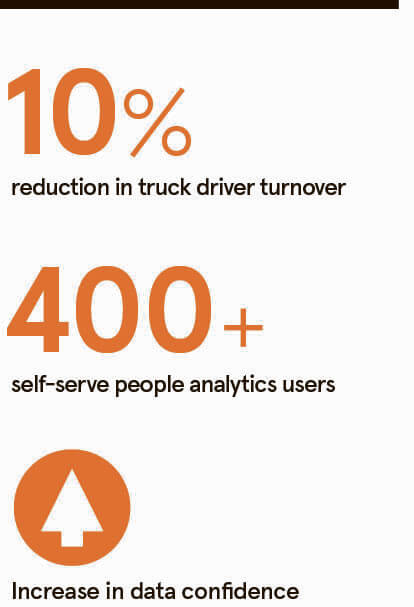The parameters by which successful workforce planning is judged are in a state of transition and, despite many organisations’ reliance on technology to evolve in tandem, many are failing to align these tools with a sustainable strategy.
The attrition and retention of critical top talent is something every organisation needs to address and many have recognised the impact data analytics can play in these efforts. However, to tackle the data challenge before pinpointing which organisational goals this data should influence is to create a chasm between frontline digital integration and longer-term business benefits in the realm of human resources.
Visier’s ten-year journey has revolved around turning this ethos on its head, by going beyond its market-leading workforce planning data proposition, to a more holistic consultative model which guides companies through the digital HR minefield.
“Even when customers tell us that their talent attrition rate is at 3 to 4 per cent, so at a good level, we can still find pockets of attrition occurring in critical roles they didn’t even realise,” says Visier’s co-founder Jan Schwarz. “Combine this with wider overlapping and complex considerations such as fair pay practices, optimisation of the recruitment funnel, diversity and inclusion considerations, and countless other use-cases, then you begin to see why a people analytics proposition such as ours is so popular.
“However, what we’re ultimately trying to undo is an industry trend whereby companies have been encouraged to apply data first and find business improvement later.”
Visier strives to temper this instinctive and ingrained over-reliance on data to deduce strategy, effectively reversing the process so strategy drives data optimisation instead.
Schwarz says: “To really and truly enact scalable decision-making, you have to have a balance between effective data governance in tandem with precise people analytics strategy. We believe companies should begin with the latter, rather than diving in product first.”
A host of blue-chip organisations, including Pitney Bowes, Experian, Anglo American and Merck, have reported back more accurate results and enhanced financial returns as a result of garnering a better understanding of their businesses from a talent management perspective from the outset.

It might sound groundbreaking, but in fact areas such as sales and marketing have been leveraging this approach for some time, making HR’s adoption of a strategy-first ethos all the more important, yet no less complicated.
“Over the years, workforce data has been very difficult to deal with, incredibly siloed and not easily structured for data analysts to work with in conjunction with other departmental data,” says Schwarz. “HR has subsequently played it safe and focused more on the operational and transactional side of things, instead of the all-important strategy.”
When Visier engages in conversations around workforce planning to this end, all too often the initial response delves into human capital system iterations or the next quick-fix tool.
“This is instead of a chief executive or chief operating officer laying out their top three or five priorities for the upcoming year,” says Schwarz. “We are urging these companies to change the dynamic, to align their people practices to wider organisational targets, and to then allocate the requisite resources and tools to meet these aims.”
The need to get this process right is being compounded and clouded at present by extra pressure at board level, many demanding HR information that currently isn’t attainable without data-driven solutions. Accuracy and scalability of this data is, correctly, deemed pivotal to continuous improvement, but it’s important not to rush the process in response to these demands.
“A holistic view of the workforce is the only way to understand all the contributing factors that go towards workforce management,” Schwarz concludes. “We offset risk by not only shifting the data mindset, but by then highlighting how data optimisation across HR can tie into wider business aspirations and department-specific considerations.
“Ultimately, organisations need to consider the hard metrics of business development when analysing the softer areas of decision-making to positively impact their future workforce.”
For more information please visit www.visier.com






